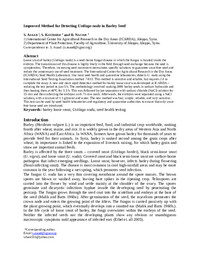Improved method for detecting Ustilago nuda in barley seed

Authors:
Loose smut of barley (Ustilago nuda) is a seed-borne fungal disease in which the
fungus is located inside the embryo. The transmission of this disease is highly likely
in the field through seed exchange because the seed is symptomless. Therefore,
increasing seed movement necessitates specific solutions to guarantee smut-free seed
and reduce the unnecessary use of seed treatment. The International Centre for Agricultural
Research in the Dry Areas (ICARDA) Seed Health Laboratory, like most
seed health and quarantine laboratories, detects U. nuda using the International Seed
Testing Association method 7-013. This method is sensitive and reliable, but requires
2 days to complete the assay. A new and more rapid detection method for barley
loose smut was developed at ICARDA – reducing the test period to just 5 h. The
methodology involved soaking 2000 barley seeds in sodium hydroxide and then
heating them at 40 °C for 3.5 h. This was followed by pre-separation with sodium
chloride (NaCl) solution for 15 min and then collecting the embryos on 0.71mm
mesh. Afterwards, the embryos were separated using a NaCl solution, with a mixture
of 1:1 glycerol and water. The new method was fast, simple, reliable and very sensitive.
This test can be used by seed health laboratories and regulatory and quarantine
authorities to ensure that only smut-free loose seed are introduced.
